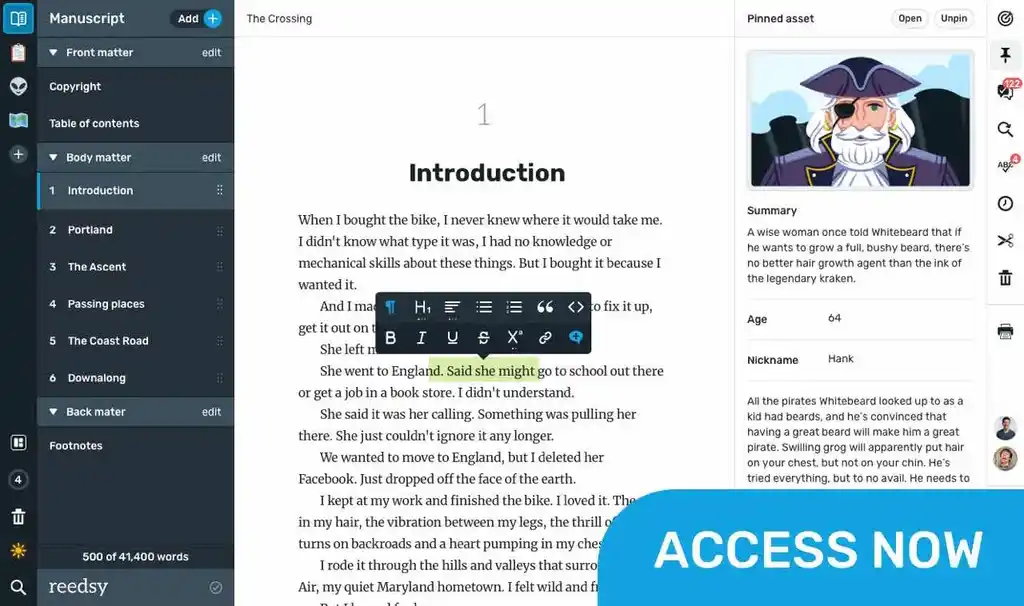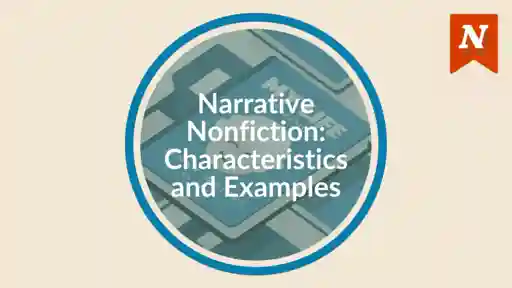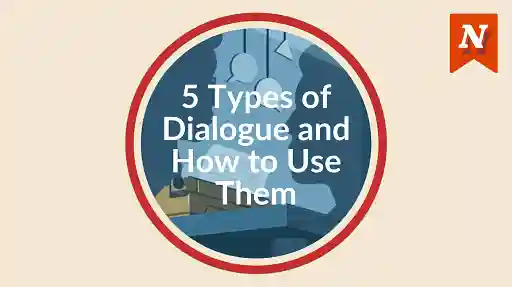There are many different ways to categorize stories. At the simplest level, they can be divided into two main types: fiction and nonfiction. Each of these can be broken down further into genres, or you can classify stories according to the intended audience (children, young adults, etc.).
Another interesting classification system comes from Christopher Booker’s seminal work The Seven Basic Plots. Booker argues that all stories essentially follow one of nine fundamental plots (yes, the title is a misnomer!).
Booker has faced criticism for oversimplifying the literary landscape and being quick to judge works that don’t fit neatly into his categories. Writer and literary critic Michiko Kakutani calls Booker “biased” and “blockheaded.”
Nevertheless, Booker's ideas have revolutionized the way we think about plot. Knowing what type(s) of story you’re writing can help you make conscious choices about your narrative structure and tropes — as long as you don’t take Booker’s theories as gospel. In this article, I’ll be breaking down Booker’s nine types of stories, complete with classic and contemporary examples.
1. Overcoming the Monster
In “overcoming the monster” stories, the protagonist must defeat an antagonistic force that threatens them, their family, their community, or even the whole world. The antagonist doesn’t have to be an actual monster; it can be a human villain, a natural disaster, or a deadly plague.
Importantly, the story must narrate the hero’s struggle and triumph, although the obstacles they face should be difficult enough that the characters (and reader) aren’t completely certain that they will succeed.
There are many famous “overcoming the monster” stories. Here are a few of them:
- 🧛 Dracula by Bram Stoker: Van Helsing tracks down and vanquishes an ancient vampire, who is a traditional monster figure.
- 🦈 Jaws by Peter Benchley: Chief Martin Brody kills the man-eating shark that has been terrorizing his town. This monster is not mythical, but is still a bloodthirsty creature.
- 🔥 A Series of Unfortunate Events by Lemony Snicket: The monster in this series is human. In each book, the Baudelaire orphans foil Count Olaf, an actor posing as guardian after guardian in an attempt to steal their fortune.
- 🧑🚀 Project Hail Mary by Andy Weir: Lone astronaut Ryland Grace defeats an unusual monster: an alien microbe that threatens to destroy all life in the solar system.
2. Rags to Riches
“Rags to riches” stories would be better named “rags to riches to rags to riches,” as the protagonist not only acquires wealth, power, status, or love, but crucially loses it all (or almost does), before gaining it back at the end. Besides raising the stakes and building tension, the temporary setback usually serves one of two functions: to teach the protagonist a lesson about what true riches are, or to show readers that their quiet perseverance makes them worthy of good fortune.
Both options are represented among these well-known “rags to riches” stories:
- 🕌 Aladdin (Disney version): Aladdin starts off as a street urchin, but the genie transforms him into a prince who wins Princess Jasmine's heart. However, he loses it all when Jafar exposes his deception. It’s only when he learns to be true to himself that he regains Jasmine’s love and earns his place in the royal family.
- 🥄 Oliver Twist by Charles Dickens: Oliver is an orphan who grows up in a workhouse, then is sold to an undertaker. He escapes to London and stays with a criminal gang. After being accused of a pickpocketing crime he didn’t commit, Oliver is taken in by a wealthy family — until he is kidnapped by associates of the gang. More highs and lows follow, but in the end the criminals are brought to justice and Oliver gets the loving home he deserves.
- 🎮 Ready Player One by Ernest Cline: Wade comes from a poor background, but achieves fame and wealth when he solves the first clue in a virtual treasure hunt that nobody has made progress on in five years. He faces major setbacks when a huge corporation tries to eliminate him from the running by having him killed — but his determination and daring prove that he is worthy of his eventual victory.
3. The Quest
In “quest” stories, the protagonist and sidekick(s) embark on an important mission — usually either to reach a certain location or find a person, object, or even abstract concept. On the way, they encounter obstacles — both external and internal. External obstacles include villains, natural disasters, and economic hardship, while internal obstacles range from self-doubt to arrogance.
Although “quest” stories typically center around a physical journey, the characters also undergo significant personal growth.
Here are some examples of “quest” stories you might have heard of:
- ⚓ The Odyssey by Homer: Odysseus’s quest is simply to find his way back home after the Trojan War. But this takes him ten years due to the monsters, gods, and treacherous seas he faces along the way. His adventures transform him from proud and impulsive to humble and wise.
- 💍 The Lord of the Rings by J.R.R. Tolkien: Frodo and his companions journey across Middle-earth to destroy the One Ring, facing orcs, giant spiders, and the Ring's corrupting influence. Frodo transitions from an unremarkable everyman to a courageous hero and learns the weight of sacrifice.
- 🪵 The Road by Cormac McCarthy: The Man and his son journey to safety in a post-apocalyptic world. As he fights starvation and cannibals, The Man comes to realize the importance of holding onto morality and hope, even when survival is hanging in the balance.
- 🐠 Finding Nemo: The clownfish Marlin confronts sharks, jellyfish, and his own fears on a quest to rescue his son Nemo from captivity. Along the way, he gets more courageous and learns to trust and lean on others for help.
4. Voyage and Return
“Voyage and return” stories also involve travelling, but unlike in “quest” plots, the protagonist doesn’t intentionally set out on the journey with a goal in mind. Instead, they accidentally travel to a strange, often magical, world, where they have a series of adventures. Thanks to the life lessons they learn along the way, they return home a changed person — often with a new appreciation for their ordinary life.
Here are a few examples of “voyage and return” plots:
- 🐰 Alice’s Adventures in Wonderland by Lewis Carroll: Alice travels to one of the strangest worlds ever invented — featuring a baby that turns into a pig, a tea party where it’s always 6 o’clock, and personified playing cards painting white roses red. At first, Alice is easily intimidated and frequently apologizing, but over time she becomes more assertive and even challenges the Queen of Hearts’ nonsensical court proceedings.
- 🌈 The Wizard of Oz by L. Frank Baum: Dorothy, her house, and her dog Toto are swept away to Oz during a cyclone. After making some unusual friends, petitioning the Wizard for help, and melting The Wicked Witch of the West, Dorothy returns to the real world having learned to trust her own abilities — and with a newfound appreciation for home.
- 🐲 Spirited Away: In this Japanese anime, Chihiro and her parents enter a magical world through a tunnel they find on their way to moving houses. Chihiro’s parents turn into pigs and the little girl ends up having to work for the witch Yubaba at a bathhouse for spirits. There, she gains courage and compassion as she stands up for herself and others, eventually returning herself and her parents to the real world.
- 📖 The Midnight Library by Matt Haig: When Nora tries to kill herself, she wakes up in a magical library full of versions of the life she could have lived if she had made different decisions. Nora gets to experience several of these alternate lives, but in the end she chooses to return to her original life with a profound new appreciation for what she has.
5. Comedy
You’ve heard of comedy as a genre which makes you laugh, but have you heard of a “comedy” plot? Booker’s narrower definition of “comedy” describes plots with two crucial elements: a series of misunderstandings and a happy ending.
As well as some (but not all) funny stories, lots of romance novels have a “comedy” plot, in which misunderstandings keep would-be lovers apart.
The following “comedy” stories all contain elements of romance as well as humor:
- 🎭 The Importance of Being Earnest by Oscar Wilde: In this lighthearted play, Jack and Algernon both pretend to be Jack’s fictitious brother Ernest in order to woo two women who insist that only the name Ernest “inspires absolute confidence” in a suitor. The men’s deceptions lead to increasing confusion and resentment, but they are forgiven when they each agree to be christened “Ernest” right away. In a final twist, it turns out that Jack actually is called Ernest — only he hadn’t known because he had been abandoned as a baby. The highly absurd coincidence adds to the hilarity of the play and makes the happy ending even happier.
- 🚢 HMS Pinafore by Gilbert and Sullivan: Gilbert and Sullivan’s comic operas are known for their sudden revelations that make everything right. In HMS Pinafore, a comedy set on a ship, the Captain’s daughter Josephine is in love with lowly crew member Ralph, but is expected to marry high-ranking aristocrat Sir Joseph. However, the entire play’s conflict is resolved when it’s revealed that Captain Corcoran and Ralph were swapped as babies; Sir Joseph is no longer interested in Josephine, now merely a crewman’s daughter, and she is free to marry Ralph.
- 💰 Crazy Rich Asians by Kevin Kwan: Rachel visits her boyfriend Nick’s family in Singapore but doesn’t realize how wealthy Nick is. Nick, on the other hand, doesn’t foresee his family’s reaction to his “simple” girlfriend. Despite a series of misunderstandings and some deliberate deceit, Rachel and Nick eventually find their happy ending.
6. Tragedy
Just as not all funny stories are “comedies,” not all sad stories are “tragedies.” Booker defines a “tragedy” plot as a story in which the protagonist’s own “fatal flaw” or error — for example, hubris, greed, or jealousy — leads to their demise.
“Tragedy” plays were very popular in Ancient Greece and followed a fairly rigid structure, alternating between dialogue and choral sections. Modern “tragedies” are more diverse, but still center around a fatal flaw.
Here are some examples of "tragedy" plots in ancient and modern literature:
- 👑 Oedipus Rex by Sophocles: Oedipus is proud and stubborn — so much so that he relentlessly hunts the previous King’s murderer, not realizing that he himself killed his father and married his mother, fulfilling the prophecy he was trying to escape. When the truth comes out, Oedipus’ mother/wife hangs herself and Oedipus gouges his eyes out.
- 🍸 The Great Gatsby by F. Scott Fitzgerald: Gatsby’s fatal flaw is his misguided belief that he can recapture the past. His obsessive attempt to do so sparks a series of events that ultimately leads to his murder.
- 🧪 Breaking Bad: In this TV show, Walter starts off as an ordinary chemistry teacher, but after he is diagnosed with cancer, he starts manufacturing and selling methamphetamine to secure his family’s future. Walter’s stubborn belief in self-sufficiency and refusal to accept “charity” lead him deeper into the criminal world in pursuit of power, ultimately causing his demise and hurting the loved ones he swore to protect.
7. Rebirth
Except for tragedies, all of the above plot types feature personal growth as part of the story (indeed, it is the distinct lack of growth that is so tragic in tragedies). However, when self-improvement is the main result of the story’s events — instigated by interactions with other characters or difficult situations — Booker defines the story as a “rebirth” plot.
There are many famous “rebirth” stories:
- 👻 A Christmas Carol by Charles Dickens: Scrooge transforms into a completely different person overnight after being visited by four ghosts on Christmas Eve. His old colleague Jacob Marley and the Ghosts of Christmas Past, Present, and Yet to Come show Scrooge the error of his ways and he wakes up a vastly more generous and compassionate man.
- 🌷 The Secret Garden by Frances Hodgson Burnett: Mary starts off as a spoiled, grumpy child, but tending to a hidden garden changes her into a caring, joyful girl.
- 🌹 Beauty and the Beast (Disney version): In the Disney retelling of Gabrielle-Suzanne de Villeneuve’s fairytale, the Beast is a Prince who was cursed by an enchantress after he refused to give her shelter from a storm. He will only transform back if he learns to love someone and earn their love in return before the last petal falls from a magical rose.
- ⏰ Groundhog Day: TV weatherman Phil is cynical, selfish, and rude. He gets stuck living the same day over and over again and it’s only by learning to care about others that he breaks free from the time loop.
And there you have it: the seven basic plots that Booker deemed the most foundational ones in all of literature. The other two — “mystery” and “rebellion against ‘the one’” — he dismissed as uncommon or undesirable, but with their rising popularity and complexity, they belong on this list as much as any. So let’s take a look.
8. Mystery
The first of these bonus plots is “mystery.” “Mystery” stories follow an outsider as they try to uncover the truth about a horrendous event, such as a murder or kidnapping. (If the detective is personally involved, the plot is most likely a quest instead.)
The mystery can also be supernatural. If a story focuses on discovering the truth behind supernatural events, it’s a “mystery” plot; if it centers around defeating the supernatural being, it’s an “overcoming the monster” plot.
Booker dislikes “mystery” plots because he believes that the detective figure doesn’t face any inner conflict. However, multiple “mysteries” prove him wrong on this, including Agatha Christie’s Murder on the Orient Express. Major spoiler alert: when Poirot finds out that all twelve passengers on the train conspired to murder Ratchett for kidnapping and killing three-year-old Daisy Armstrong, he faces the moral dilemma of whether to turn them in or tell the police he thinks it was an outsider.
Besides Agatha Christie’s books, here are some other famous “mystery” stories:
- 🕵️ Most Sherlock Holmes tales by Sir Arthur Conan Doyle: In the majority of Sherlock Holmes stories, Sherlock and Watson aren’t personally affected by the case. Holmes solves a variety of mysteries, from murder to theft to fraud.
- 🎰 The Big Sleep by Raymond Chandler: Private Detective Philip Marlowe investigates a blackmail case that turns into a multiple homicide investigation.
- 🐉 The Girl with the Dragon Tattoo by Stieg Larsson: Journalist Mikael Blomkvist and hacker Lisbeth Salander are hired by the head of one of the wealthiest families in Sweden to investigate the disappearance of his niece Harriet Vanger 40 years ago.
- 🏚️ Mexican Gothic by Silvia Moreno-Garcia: Noemí receives a disturbing letter from her cousin Catalina, who recently married into the Doyle family. She travels to the family’s mansion, where she uncovers the truth behind the supernatural forces at play.
9. Rebellion Against “the One”
Booker’s final plot type involves the protagonist fighting against a powerful entity such as a god, a cult, or the government. However, the character eventually realizes that “the One” has been right all along and submits to the greater power — either for the better or for the worse from the reader’s perspective.
In modern dystopian stories, it’s common for a rebellion against “the One” to be successful, as in The Hunger Games and The Matrix. However, such stories are not actually “rebellion against ‘the one’” stories, but “overcoming the monster” plots in which the government is the monster.
Let’s look at two examples of “rebellion against ‘the one’” stories:
- 🐳 The Book of Jonah: This biblical story follows Jonah, a Hebrew prophet called to preach to the enemy city of Nineveh. Jonah disobeys and tries to flee by ship, but is swallowed by a whale. After three nights, he repents, is spat out, and accepts God’s plan for him — arguably for the better.
- 👁️ 1984 by George Orwell: Winston initially rebels against the totalitarian Party that rules Oceania, but he is captured and tortured by the Thought Police, who successfully reintegrate him into society — very much for the worse, in most readers’ opinion.
Booker’s plot types are neither mutually exclusive nor exhaustive (for example, some slice-of-life novels don’t fall into any category since they’re considered “plotless” stories). You certainly shouldn’t shoehorn your story into one of the nine plot types if it doesn’t naturally fit in. But you can still use Booker’s epithets for inspiration and to inform yourself of readers’ general expectations — whether you want to meet these expectations or subvert them.











I will share this wonderful post with my creative writing group. I think it will inspire and direct their energies. And it’s a feast for thought! Thank you.
Heather - Over 3 years ago
Hi Heather, thank you so much for sharing your feedback. I hope your writing group finds it useful!
Jordan - Over 3 years ago